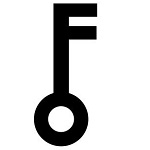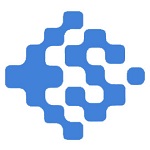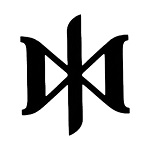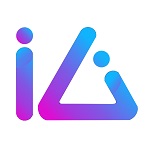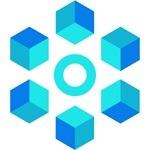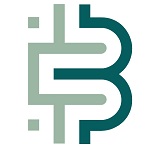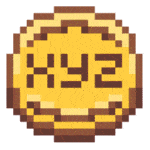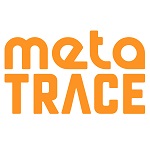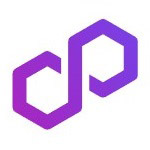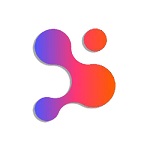Polygon Ecosystem
| Projects | Status | Date start | Raised | Launchpad | Ecosystem | X score | Interest lvl | Industry | ||
|---|---|---|---|---|---|---|---|---|---|---|
ICO Ongoing | Dec 12, 2024 | DeFi +1 | ||||||||
ICO Ongoing | Mar 31, 2025 | Blockchain +5 | ||||||||
| TBA | Privacy & Security +6 | |||||||||
| TBA | $910M | Gaming +5 | ||||||||
| TBA | Blockchain +3 | |||||||||
| TBA | Gaming +2 | |||||||||
IDO | Jun 07, 2025 | RWA +1 | ||||||||
| Jun 07, 2025 | $56M | Software +4 | ||||||||
IDO | Jun 27, 2025 | Gaming +2 | ||||||||
| Jun 27, 2025 | $15M | Crowdfunding & Lending +4 | ||||||||
ICO IEO Past | Apr 16, 2025 | Exchanges & Wallets +5 | ||||||||
ICO Past | Apr 16, 2025 | Data Analytics +7 | ||||||||
IDO | TBA | DeFi +1 | ||||||||
IDO Past | Mar 17, 2025 | Blockchain +6 | ||||||||
ICO Past | Mar 17, 2025 | Meme | ||||||||
IDO Past | May 05, 2025 | Internet & Telecommunications +9 | ||||||||
IDO Past | Feb 18, 2025 | Crowdfunding & Lending +4 | ||||||||
ICO | Feb 18, 2025 | Events & Entertainment | ||||||||
ICO | Feb 18, 2025 | Gaming +3 | ||||||||
IDO Past | May 28, 2025 | Gambling +3 | ||||||||
ICO IDO | TBA | Exchanges & Wallets +4 | ||||||||
ICO Past | Jan 19, 2025 | Gaming +3 | ||||||||
| TBA | Gaming +2 | |||||||||
IDO Past | Dec 27, 2024 | Gaming +1 | ||||||||
IDO Past | Nov 25, 2024 | AI +1 | ||||||||
ICO | Nov 25, 2024 | NFT +2 | ||||||||
| Nov 25, 2024 | $30M | Identity & Reputation +5 | ||||||||
| Nov 25, 2024 | $85M | Blockchain +1 | ||||||||
IDO Past | Nov 08, 2024 | Events & Entertainment +2 | ||||||||
IDO Past | Oct 29, 2024 | $5,2M | Finance +3 | |||||||
ICO | Oct 29, 2024 | Sport +3 | ||||||||
ICO | Oct 29, 2024 | Gaming +1 | ||||||||
IDO | Nov 18, 2024 | Gaming +4 | ||||||||
IDO Past | Jun 24, 2024 | $3M | Gaming +2 | |||||||
IDO Past | Mar 17, 2023 | $3M | Social +1 | |||||||
IDO Past | Apr 06, 2024 | Exchanges & Wallets +1 | ||||||||
IDO Past | Mar 27, 2024 | Crowdfunding & Lending +2 | ||||||||
IDO | TBA | Gaming +1 | ||||||||
IDO IEO | Apr 11, 2024 | $2,5M | Blockchain +3 | |||||||
ICO Past | Apr 11, 2024 | Gaming +3 | ||||||||
IDO Past | Oct 05, 2023 | DeFi +2 | ||||||||
ICO IDO Past | Jun 16, 2024 | Education +1 | ||||||||
ICO | Jun 16, 2024 | Gaming +3 | ||||||||
ICO Past | Jun 16, 2024 | $451,5M | Blockchain +2 | |||||||
IDO | Apr 12, 2024 | Social +3 | ||||||||
IDO IEO Past | May 14, 2023 | Sport +1 | ||||||||
IDO Past | Feb 27, 2023 | NFT | ||||||||
IDO Past | Mar 03, 2022 | Gaming +1 | ||||||||
| Mar 03, 2022 | Crowdfunding & Lending +2 | |||||||||
IEO Past | Jan 30, 2023 | Gaming +4 | ||||||||
What is Polygon network
Polygon is a scaling solution or so-called sidechain for the ETH network. Polygon goal is to solve the scalability problem and increase the transaction speed in the Ethereum network.
Polygon core goal is to create an efficient system through which any Ethereum scaling solution can be utilized. Polygon is also focused on empowering the use of DeFi tools and DApps by integrating different blockchains.
Polygon was founded in 2017 in India by Jainti Kanani, Sandeep Neilwal, Anurag Arjun and Mihail Bjelic.
Interesting fact. Previously, Polygon was called Matic Network. However, in 2021, the leaders rebranded the project and called it Polygon. At the same time, the ecosystem made the transition to a multichain system similar to Polkadot.
Investors & partners
- Disney Accelerator
- Galaxy
- The Spartan Group
- DragonFly Capital
- Animoca Brands
- Coinbase Ventures
- Binance Labs, and more.
At the time of writing, there are already over 50,000 DApps running on the platform. Among the key partners, one can observe projects such as:
- Chainlink
- Ocean
- Coinbase
- Consensys Diligence
- Venly Web3 SaaS Platform
- Amazon Managed Blockchain
Key mechanics of Polygon blockchain
The Polygon system is a high-tech bridge that allows the transfer of digital assets between ETH and Polygon. It also gives access to other tools and DApps. It is also noteworthy that Polygon implements a dual consensus mechanism, which makes it more decentralized and efficient.
In addition, the platform architecture is designed to allow arbitrary state transitions in the sidechain by adapting to the Ethereum Virtual Machine (EVM). This enables inter-chain asset transfers to be instantaneous, without the constraints of market liquidity and third-party risks.
Notably, Polygon uses Zk-Rollups, as part of zkEVM. This approach allows off-chain transactions to be combined only for subsequent batch verification on the Ethereum network.
Also, according to official information, Polygon includes four tiers of layers, each of which fills the ecosystem with important functionality:
- Staking layer
- Agg layer
- Execution Layer
- Proof Layer
The foundation of the Polygon ecosystem includes technologies like:
- Polygon Nightfall hybrid solution for privacy and combining Optimistic Rollups with zk-Rollups
- Polygon Miden modular solution for utilizing the Rust and TypeScript programming languages
- Polygon Wallet Suite platform for secure and efficient exchange of digital assets
- Modular open source toolkit Polygon Chain Development Kit (CDK)
- User-owned Polygon ID for storing and managing personal data
- Polygon Avail solution for data storage and the ability to access DApps while maintaining data integrity
Polygon advantages
Polygon is an ecosystem of tens of thousands of decentralized applications in the fields of DeFi, metaverses, gaming, and NFTs. The platform features L2 solutions that utilize ZK-Rollups technology. Polygon’s architecture allows developers to offer a large set of solutions that are suitable for different application scenarios.
For DeFi, algorithms that provide high security are preferred. They assume the use of Ethereum as a base layer. For startups, it makes the most sense to apply a simple and inexpensive solution. Then you can choose a pool of validators that is shared by several projects.
Polygon allows you to create special applications focused on fast transactions. They utilize blockchain with minimal block creation time. The platform allows applications to interact at different levels and move between them.
Token POL (ex-MATIC)
POL is Polygon native token and is designed for several key functions:
- Staking and validation. The token is used by validators to deposit as a stake to participate in validate transactions. The more coins deposited, the higher the chances of becoming a validator or leader.
- Payment of fees. Users pay gas for transactions and fulfillment of smart-contracts in POL. These commissions are distributed to validators as rewards.
- Governance. Owners of the coin can participate in the governance of the Polygon network by voting on important issues of ecosystem development.
- In addition, the token is used for settlements between different services of the Polygon ecosystem.
Conclusion
Using Polygon Bridge is much easier than it seems at first glance: the main thing is to follow the necessary instructions and make sure you choose the right network. With an L2 blockchain, you can potentially save on transaction fees and move tokens much faster than on the Ethereum core network.
While there are many competitors in the market, Polygon continues to stand out for its ability to effectively solve existing blockchain problems. The future of this platform looks promising, and it has every chance to become one of the leading ecosystems for creating decentralized applications and tools.




